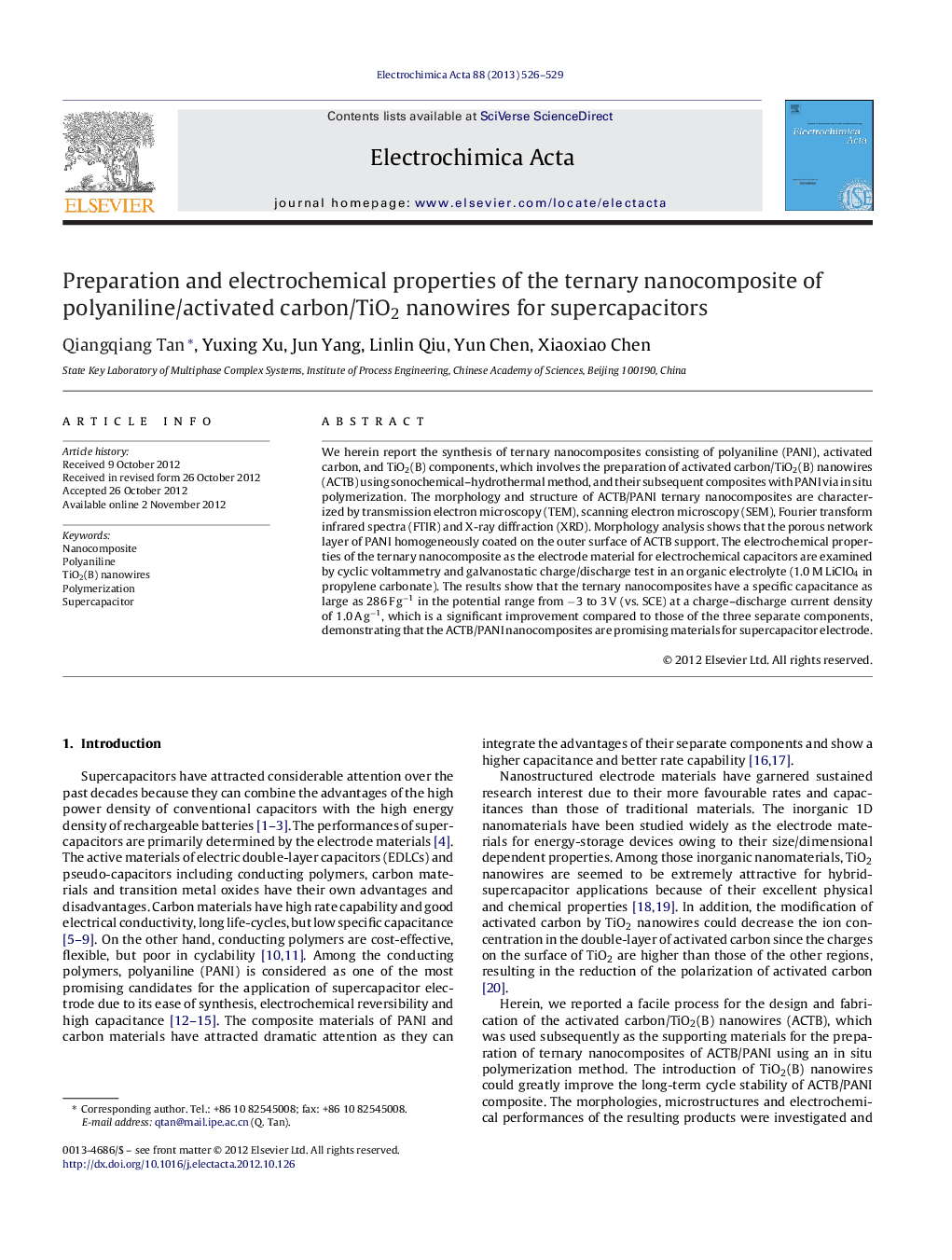| Article ID | Journal | Published Year | Pages | File Type |
|---|---|---|---|---|
| 187734 | Electrochimica Acta | 2013 | 4 Pages |
We herein report the synthesis of ternary nanocomposites consisting of polyaniline (PANI), activated carbon, and TiO2(B) components, which involves the preparation of activated carbon/TiO2(B) nanowires (ACTB) using sonochemical–hydrothermal method, and their subsequent composites with PANI via in situ polymerization. The morphology and structure of ACTB/PANI ternary nanocomposites are characterized by transmission electron microscopy (TEM), scanning electron microscopy (SEM), Fourier transform infrared spectra (FTIR) and X-ray diffraction (XRD). Morphology analysis shows that the porous network layer of PANI homogeneously coated on the outer surface of ACTB support. The electrochemical properties of the ternary nanocomposite as the electrode material for electrochemical capacitors are examined by cyclic voltammetry and galvanostatic charge/discharge test in an organic electrolyte (1.0 M LiClO4 in propylene carbonate). The results show that the ternary nanocomposites have a specific capacitance as large as 286 F g−1 in the potential range from −3 to 3 V (vs. SCE) at a charge–discharge current density of 1.0 A g−1, which is a significant improvement compared to those of the three separate components, demonstrating that the ACTB/PANI nanocomposites are promising materials for supercapacitor electrode.
Graphical abstractFigure optionsDownload full-size imageDownload as PowerPoint slideHighlights► Preparation of ternary nanocomposites (ACTB/PANI) consisting of polyaniline (PANI), activated carbon, and TiO2(B) nanowires. ► Structural and electrochemical characterizations of ternary ACTB/PANI nanocomposites. ► Excellent cycle stability of ACTB/PANI based electrode. ► Tailoring the electrochemical performance by means of a composite construction.
